Get Started for FREE
Sign up with Facebook Sign up with X
I don't have a Facebook or a X account

 Your new post is loading... Your new post is loading...
 Your new post is loading... Your new post is loading...
In this review, we will dissect the microbial actors thought to be involved in the HH as well as their immunomodulatory mechanisms as emphasized by experimental studies, with a particular attention on parasites. Thereafter, we will review the early clinical trials using helminthes’ derivatives focusing on autoimmune diseases.
Alfredo Corell's insight:
Background The Hygiene Hypothesis (HH) attributes the dramatic increase in autoimmune and allergic diseases observed in recent decades in Western countries to the reduced exposure to diverse immunoregulatory infectious agents. This theory has since largely been supported by strong epidemiological and experimental evidence. BMC Medicine 2015, 13:81 doi:10.1186/s12916-015-0306-7 The electronic version of this article is the complete one and can be found online at:http://www.biomedcentral.com/1741-7015/13/81
Alfredo Corell's insight:
Abstract:
Autoimmune encephalitis (AIE) associated with neural autoantibodies is increasingly recognized as a cause of subacute onset amnesia, confusion, and seizures. In the past decade, several key antibody targets have been identified in AIE. These include the N-methyl D-aspartate (NMDA) receptors, voltage-gated potassium channel complexes—in particular leucine-rich glioma inactivated 1 (LGI1) and glutamic acid decarboxylase (GAD). There is accumulating clinical and laboratory evidence that antibodies targeting the extracellular domains of cell-surface molecules are directly pathogenic. Each antibody target associates with a spectrum of clinical features and relative response to immunotherapies. These immunotherapies have been shown to improve short- and long-term clinical outcomes in affected patients. AIE is an important differential diagnosis to consider in patients presenting with symptoms of encephalitis as early diagnosis can lead to successful treatment. 2013 Citation European Neurological Review, 2014;9(1):87–92 Correspondence: Sarosh R Irani, DPhil, MRCP (Neurol), Level 6, West Wing, John Radcliffe Hospital, Oxford, OX3 9DS, UK. E: sarosh.irani@ndcn.ox.ac.uk
OncLive Sagar B. Kudchodkar, PhD, and Marcela V. Maus, MD, PhD Published Online: Friday, August 29, 2014
Alfredo Corell's insight:
Abstract
Chimeric antigen receptor (CAR) T-cell therapy is an immunotherapy in which the patient’s own T cells are isolated in the laboratory, redirected with a synthetic receptor to recognize a particular antigen or protein, and reinfused into the patient. Clinical trials of CAR T cells directed to the CD19 antigen have shown impressive results in advanced B-cell malignancies at multiple academic centers over the last 3 years. We describe the technology of CAR T cells, findings at 5 academic centers, and toxicities associated with CAR T cell-treatment and their management. Although CAR T cells for B-cell malignancies are the most advanced in terms of clinical testing, CAR T cells are the basis of a new platform technology that is poised to be expanded to other hematologic and nonhematologic malignancies, especially as new targets are identified and manufacturing processes are streamlined.
Alopecia areata is driven by cytotoxic T lymphocytes and is reversed by JAK ...
Alfredo Corell's insight:
Opinion from JAMA — Newborn Screening for Severe Combined Immunodeficiency — Progress and Challenges (RT @JAMA_current: #Newborn Screening for Severe Combined #Immunodeficiency http://t.co/opTP3izQBP...
Alfredo Corell's insight:
September 30, 2014, marks the 50th anniversary of the Children’s Bureau recommendation for “the screening of all newborn infants for PKU [phenylketonuria] on a routine basis.”1 By 1968, 43 states had made screening for PKU mandatory.1 As a result of technological advances, newborn screening in the United States has been extended to as many as 37 core conditions in some states.2 As reported by Kwan and colleagues3 in this issue of JAMA, newborn screening for severe combined immunodeficiency (SCID) has been undertaken in 23 states and the Navajo Nation, beginning in Wisconsin in January 2008. The authors present data on more than 3 million newborns screened with a T-cell receptor excision circle (TREC) assay followed by confirmatory flow cytometry from 11 of these programs (10 states and the Navajo Nation).
Alfredo Corell's insight:
Complement deficiencies comprise between 1 and 10% of all primary immunodeficiencies (PIDs) accord-ing to national and supranational registries. They are still considered rare and even of less clinicalimportance. This not only reflects (as in all PIDs) a great lack of awareness among clinicians and gen-eral practitioners but is also due to the fact that only few centers worldwide provide a comprehensivelaboratory complement analysis. To enable early identification, our aim is to present warning signs forcomplement deficiencies and recommendations for diagnostic approach. The genetic deficiency of anyearly component of the classical pathway (C1q, C1r/s, C2, C4) is often associated with autoimmune dis-eases whereas individuals, deficient of properdin or of the terminal pathway components (C5 to C9), arehighly susceptible to meningococcal disease. Deficiency of C1 Inhibitor (hereditary angioedema, HAE)results in episodic angioedema, which in a considerable number of patients with identical symptomsalso occurs in factor XII mutations. New clinical entities are now reported indicating disease associa-tion with partial complement defects or even certain polymorphisms (factor H, MBL, MASPs). Mutationsaffecting the regulators factor H, factor I, or CD46 and of C3 and factor B leading to severe dysregulationof the alternative pathway have been associated with renal disorders, such as atypical hemolytic uremicsyndrome (aHUS) and – less frequent – with membranoproliferative glomerulonephritis (MPGN). Wesuggest a multi-stage diagnostic protocol starting based on the recognition of so called warning signswhich should aid pediatricians and adult physicians in a timely identification followed by a step-wisecomplement analysis to characterize the defect at functional, protein and molecular level.© 2014 Published by Elsevier
I first came across the term “celiac disease autoimmunity” a few weeks ago as I read summaries of the article “Risk of Pediatric Celiac Disease According to HLA Haplotype and Country” that was published in the July 3, 2014 issue of the New England Journal of Medicine (NEJM).
Alfredo Corell's insight:
Liu E, Lee HS, Aronsson CA, et al. TEDDY Study Group. Risk of pediatric celiac disease according to HLA haplotype and country. N Engl J Med. 2014 Jul 3;371(1):42-9.
Small fiber neuropathy, rather than central sensitization, may be responsible for the pain associated with fibromyalgia, some researchers have hypothesized. (Autoimmunity anyone ? If if walks and talks and smells like it .....
Alfredo Corell's insight:
Primary source: Arthritis & Rheumatology
Highlights
Alfredo Corell's insight:
Abstract
Sjögren's syndrome (SS) is an autoimmune disease characterized primarily by lymphocytic infiltration of the exocrine glands, and autoantibody production. Multiple environmental factors affecting an individual with a genetic susceptibility may trigger the development of SS. Herein, we aimed to evaluate links between the different pebbles in the mosaic of SS. Demographic, clinical data and blood samples were gathered from 82 consecutive patients with SS, and 139 healthy controls. Samples were analyzed for infectious serology and auto-antibodies as well as for relevant genetic mutations (TAP genes) and cytokines levels. An immune response (IgG) against Epstein–Barr virus (EBV) early antigen (EA) was positively associated with SS (OR 4; 95% CI: 1.82–8.83, p = 0.001) while a protective effect of IgG anti-cytomegalovirus (CMV) was observed (OR 0.3; 95%CI: 0.16–0.74, p = 0.009). Anti-Ro/SSA, anti-LA/SSB, anti-nuclear, anti-gliadin, anti-TTG-IgG and anti-RNP antibodies were statistically more prevalent among SS patients than controls. Notably, the presence of anti-Ro/SSA and anti La/SSB correlated with anti-EBVEA IgG (OR 3.1; 95%CI: 1.08–8.74) and (OR 3.9; 95%CI: 1.37–10.96) respectively. Autoantibodies, cytokines and several genetic markers correlated with clinical manifestation of SS. Our data suggest that infectious agents may play both a causative and protective role in the pathogenesis of SS. Moreover certain autoantibodies, cytokines and specific TAP alleles correlate with clinical manifestations of SS, and may enable better prediction and/or directed therapy once confirmed in future studies.
RT @Primary_Immune: Patients with Primary #Immunodeficiency in Pediatric ICUs: Risk, Outcomes & Mortality http://t.co/5M6TDf3cXt … #immun…
Alfredo Corell's insight:
Conclusions
This is the first study regarding the outcome and mortality-related risk factors for PID patients requiring PICU admission. We suggest that PICU management is as important as early diagnosis and treatment for these patients. Prediction of those at risk for poorer outcome might be beneficial for accurate intensive care management and survival.
A Cure for Chlamydia Arthritis?
Alfredo Corell's insight:
Abstract
Chlamydia trachomatis and Chlamydia pneumoniae together comprise the most frequent causative pathogens that elicit reactive arthritis (ReA). Advances in our understanding of the molecular biology/molecular genetics of these organisms have improved significantly the ability to detect chlamydiae in the joint for diagnostic purposes, as well as extending our current understanding of the pathogenic processes they elicit in the joint and elsewhere. An important aspect of the latter is that synovial chlamydiae infect the joint in an unusual but metabolically active state. While some standard treatments can provide a palliative effect on the ReA disease phenotype, many reports have indicated that standard antibiotic treatment does not provide a cure. Of critical importance, however, two recent reports of controlled clinical trials demonstrated that Chlamydia-ReA can be treated successfully using combination antibiotic therapy. These observations offer the opportunity of a cure for this disease, thereby increasing the practical importance of awareness and diagnosis of the spondyloarthritis caused by Chlamydia. In this viewpoint, we provide an overview of recent key findings in the epidemiology, pathophysiology, clinical manifestations, diagnosis and treatment of Chlamydia-induced arthritis. Our intention is for these insights to be translated rapidly into clinical practice to overcome misdiagnosis and underdiagnosis of the disease, and for them to stimulate the continued development of a cure. Primary source: Annals of the Rheumatic Diseases
Un equipo del Centro Nacional de Investigaciones Oncológicas (CNIO) han descubierto dos posibles vías de tratamiento de la psoriasis basadas en compuestos farmacológicos que ya existen pero que no se habían contemplado hasta el momento, que en los...
Alfredo Corell's insight:
La noticia en ABC salud: http://www.abc.es/salud/noticias/20140227/abci-psoriasis-cnio-201402261329.html En uno de los trabajos, publicado en «Immunity», se demuestra que los síntomas de la enfermedad desaparecen cuando se bloquea una proteína llamada S100A9. En el otro artículo, que aparece en «Science Translational Medicine», se demuestra que esto también sucede si se actúa sobre un ARN no codificante, el micro ARN miR-21. |
Original Article from The New England Journal of Medicine — Effect of Avoidance on Peanut Allergy after Early Peanut Consumption
Alfredo Corell's insight:
CONCLUSIONS Among children at high risk for allergy in whom peanuts had been introduced in the first year of life and continued until 5 years of age, a 12-month period of peanut avoidance was not associated with an increase in the prevalence of peanut allergy. Longer-term effects are not known.
Mast cells are primary effectors in allergic reactions, and may have important roles in disease by secreting histamine and various inflammatory and immunomodulatory substances. Although they are classically activated by immunoglobulin (Ig)E antibodies, a unique property of mast cells is their antibody-independent responsiveness to a range of cationic substances, collectively called basic secretagogues, including inflammatory peptides and drugs associated with allergic-type reactions. The pathogenic roles of these substances have prompted a decades-long search for their receptor(s). Here we report that basic secretagogues activate mouse mast cells in vitro and in vivo through a single receptor, Mrgprb2, the orthologue of the human G-protein-coupled receptor MRGPRX2. Secretagogue-induced histamine release, inflammation and airway contraction are abolished in Mrgprb2-null mutant mice. Furthermore, we show that most classes of US Food and Drug Administration (FDA)-approved peptidergic drugs associated with allergic-type injection-site reactions also activate Mrgprb2 and MRGPRX2, and that injection-site inflammation is absent in mutant mice. Finally, we determine that Mrgprb2 and MRGPRX2 are targets of many small-molecule drugs associated with systemic pseudo-allergic, or anaphylactoid, reactions; we show that drug-induced symptoms of anaphylactoid responses are significantly reduced in knockout mice; and we identify a common chemical motif in several of these molecules that may help predict side effects of other compounds. These discoveries introduce a mouse model to study mast cell activation by basic secretagogues and identify MRGPRX2 as a potential therapeutic target to reduce a subset of drug-induced adverse effects.
Alfredo Corell's insight:
Because infectious diseases are a major source of morbidity and mortality in the majority of patients with primary immunodeficiencies (PIDs), the application of a prophylactic regimen is often necessary. However, because of the variety of PIDs and pathogens involved, and because evidence is scarce, practices are heterogeneous. To homogenize practices among centers, the French National Reference Center for PIDs aimed at elaborating recommendations for anti-infectious prophylaxis for the most common PIDs. We performed a literature review of infectious complications and prophylactic regimens associated with the most frequent PIDs. Then, a working group including different specialists systematically debated about chemoprophylaxis, immunotherapy, immunization, and recommendations for patients. Grading of prophylaxis was done using strength of recommendations (decreasing from A to D) and evidence level (decreasing from I to III). These might help infectious diseases specialists in the management of PIDs and improving the outcome of patients with PIDs.
The prevalence of thyroid autoimmunity in patients with #urticaria: a systematic review and meta-analysis. http://t.co/RLgLl7jRna
Alfredo Corell's insight:
ENDOCRINE, July 27th, 2014 The meta-analysis results showed that the prevalence of positive thyroid autoantibodies in patients with urticaria was higher than non-urticaria controls (TgAb: OR 6.55, 95 % CI 3.19–13.42, P < 0.00001, I 2 = 67 %; TmAb: OR 4.51, 95 % CI 2.78–7.33, P < 0.00001, I 2 = 47 %; TPOAb: OR 8.71, 95 % CI 6.89–11.01,P < 0.00001, I 2 = 20 %, respectively). The results of this meta-analysis suggested that patients with urticaria were more likely to have thyroid autoimmunity than the control groups.
Researchers have found a method to repair the gene mutation causing agammaglobulinemia, an immunodeficiency disease that almost exclusively affects boys and in which the body lacks the ability to produce immunoglobulins (gamma globulin). The disease is characterized by recurring bacterial infections, mainly in the respiratory system, and persons who suffer from the illness currently need life-long gamma globulin treatment.
Alfredo Corell's insight:
X-linked agammaglobulinemia (XLA) is an inherited immunodeficiency that results from mutations within the gene encoding Bruton’s tyrosine kinase (BTK). Many XLA-associated mutations affect splicing of BTK pre-mRNA and severely impair B cell development. Here, we assessed the potential of antisense, splice-correcting oligonucleotides (SCOs) targeting mutated BTK transcripts for treating XLA. Both the SCO structural design and chemical properties were optimized using 2′-O-methyl, locked nucleic acid, or phosphorodiamidate morpholino backbones. In order to have access to an animal model of XLA, we engineered a transgenic mouse that harbors a BAC with an authentic, mutated, splice-defective human BTK gene. BTK transgenic mice were bred onto a Btk knockout background to avoid interference of the orthologous mouse protein. Using this model, we determined that BTK-specific SCOs are able to correct aberrantly spliced BTK in B lymphocytes, including pro–B cells. Correction of BTK mRNA restored expression of functional protein, as shown both by enhanced lymphocyte survival and reestablished BTK activation upon B cell receptor stimulation. Furthermore, SCO treatment corrected splicing and restored BTK expression in primary cells from patients with XLA. Together, our data demonstrate that SCOs can restore BTK function and that BTK-targeting SCOs have potential as personalized medicine in patients with XLA. GO TO THE JOURNAL OF CLINICAL INVESTIGATION MANUSCRIPT:
Original Article from The New England Journal of Medicine — Transplantation Outcomes for Severe Combined Immunodeficiency, 2000–2009
Alfredo Corell's insight:
Sung-Yun Pai, M.D., Brent R. Logan, Ph.D., Linda M. Griffith, M.D., Ph.D., Rebecca H. Buckley, M.D., Roberta E. Parrott, B.S., Christopher C. Dvorak, M.D., Neena Kapoor, M.D., Imelda C. Hanson, M.D., Alexandra H. Filipovich, M.D., Soma Jyonouchi, M.D., Kathleen E. Sullivan, M.D., Ph.D., Trudy N. Small, M.D., Lauri Burroughs, M.D., Suzanne Skoda-Smith, M.D., Ann E. Haight, M.D., Audrey Grizzle, M.P.H., Michael A. Pulsipher, M.D., Ka Wah Chan, M.D., Ramsay L. Fuleihan, M.D., Elie Haddad, M.D., Ph.D., Brett Loechelt, M.D., Victor M. Aquino, M.D., Alfred Gillio, M.D., Jeffrey Davis, M.D., Alan Knutsen, M.D., Angela R. Smith, M.D., Theodore B. Moore, M.D., Marlis L. Schroeder, M.D., Frederick D. Goldman, M.D., James A. Connelly, M.D., Matthew H. Porteus, M.D., Ph.D., Qun Xiang, M.S., William T. Shearer, M.D., Ph.D., Thomas A. Fleisher, M.D., Donald B. Kohn, M.D., Jennifer M. Puck, M.D., Luigi D. Notarangelo, M.D., Morton J. Cowan, M.D., and Richard J. O'Reilly, M.D. N Engl J Med 2014; 371:434-446July 31, 2014DOI: 10.1056/NEJMoa1401177 CONCLUSIONS Transplants from donors other than matched siblings were associated with excellent survival among infants with SCID identified before the onset of infection. All available graft sources are expected to lead to excellent survival among asymptomatic infants. (Funded by the National Institute of Allergy and Infectious Diseases and others.)
Myelodysplastic syndromes (MDS) are characterized by ineffective hematopoiesis, resulting in peripheral blood cytopenias, myeloid dysplasia and risk of leukemic transformation.
Alfredo Corell's insight:
Leukemia (2014) 28, 189–192; doi:10.1038/leu.2013.195; published online 16 July 2013 The clinical relevance of minor paroxysmal nocturnal hemoglobinuria clones in refractory cytopenia of childhood: a prospective study by EWOG-MDSA M Aalbers et al.
Su desactivación facilita los tratamientos inmunológicos contra el cáncer
Alfredo Corell's insight:
La inmunoterapia contra el cáncer —enseñar al sistema de defensa del organismo a atacar a las células tumorales— se presenta como la nueva revolución en oncología. Pero no es fácil. La revista Nature Medicine ha publicado un artículo en el que el proceso no se centra directamente en combatir las células tumorales, sino en otras que pululan a su alrededor y que, de alguna manera, hacen de escudo. artículo en Nature Medicine: http://www.nature.com/nm/journal/vaop/ncurrent/full/nm.3560.html
Special Issues in Autoimmunity Reviews and Journal of Autoimmunity
Alfredo Corell's insight:
Special Issues in Autoimmunity Reviews and Journal of Autoimmunity Autoimmunity Reviews and the Journal of Autoimmunity both feature a special issue on diagnostic criteria in autoimmune diseases, to coincide with the 9th International Congress on Autoimmunity in Nice, France, in March 2014. Here you can read both issues – free access until June 2014. Diagnostic Criteria in Autoimmune Diseases Diagnostic Criteria in Autoimmune Diseases
A major effort to understand a not so rare immunodeficiency
Alfredo Corell's insight:
Common variable immunodeficiency (CVID) is the most frequent of the large group of primary (inborn) immunodeficiencies. As the name indicates, the disease is highly variable. While the underlying defect is a lack of antibodies in the blood, patients develop a wide range of symptoms, from respiratory infections to autoimmune disorders and neoplasms, and treating such patients poses many challenges. Notably, the replacement of antibodies (known as immunoglobulin (Ig) replacement) alone does not seem to solve all symptoms; studies in the past have tried to group patients into different phenotypes, also to help identify suitable treatment, but our understanding of the disease remains limited.
Find information on Common Variable Immune Deficiency (CVID), including definition, diagnosis, treatment, and expectations for patients.
Alfredo Corell's insight:
An atypically adult with CVID recently published on "The Lancet" The Lancet, Volume 383, Issue 9920, Page 926, 8 March 2014 doi:10.1016/S0140-6736(14)60415-3Cite or Link Using DOI Common variable immunodeficiency syndrome in an adult Dr Laura S Lourdes MD a , Karen C Daily DO b
National Geographic
Alfredo Corell's insight:
Rampant disagreement over what constitutes Lyme disease—in particular, who may have contracted it and how, and how long it lasts—has spawned the larger question of how best to treat it. A new study pointing to the possibility of sexual transmission of the pathogen adds fuel to the fire. |








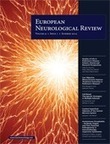
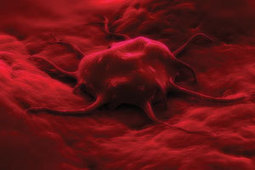
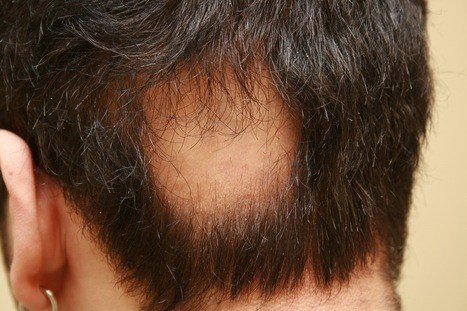
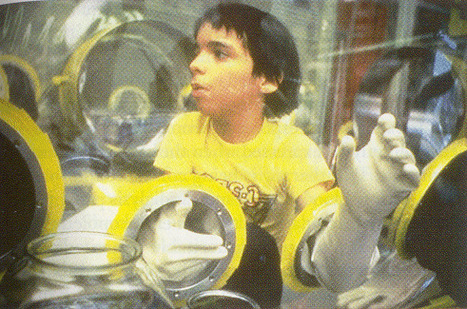

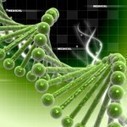
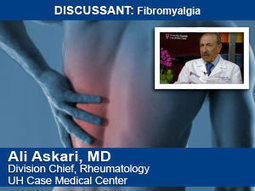
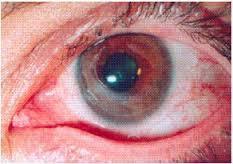
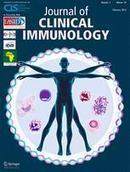
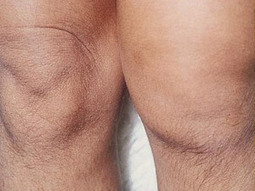
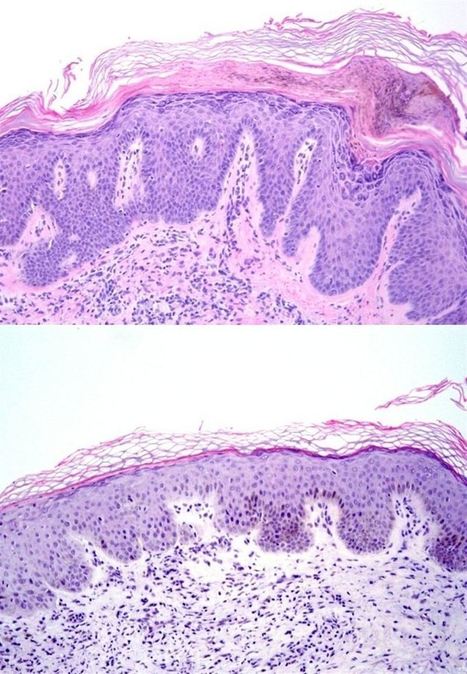

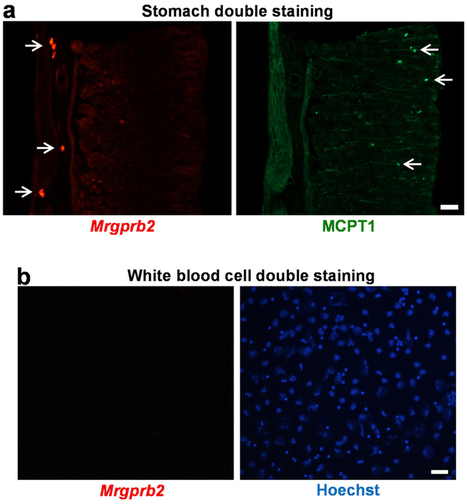
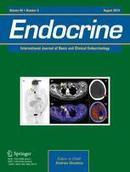



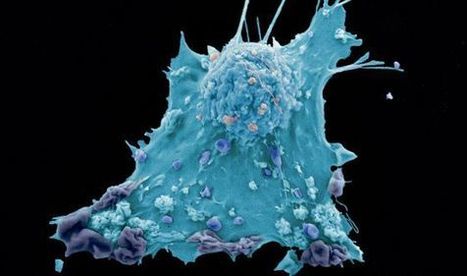

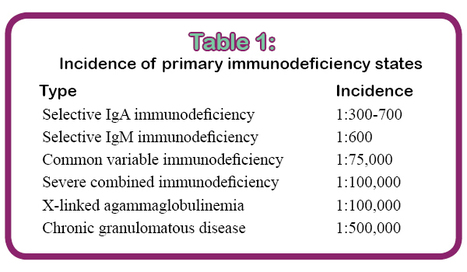
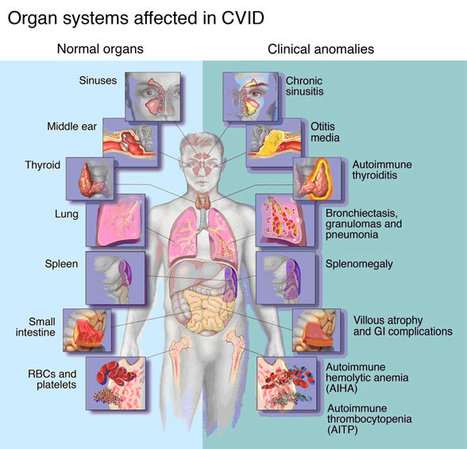






THE BIRTH OF IMMUNOLOGY:
The work of Behring and Kitasato not only proved that indeed “[b]lood is a very unusual fluid,” it also represented a major step in the discovery of antibodies, the development of effective human vaccines and the birth of immunology.